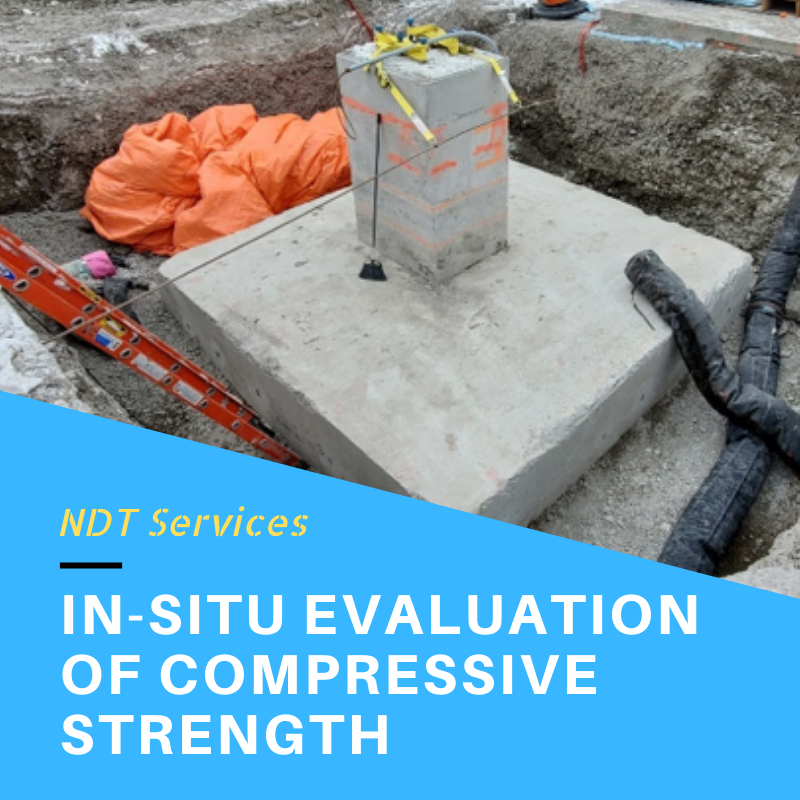
The Problem
FPrimeC was retained by Golder Associates Ltd. for in-situ evaluation of concrete strength in a recently constructed footing element in Pickering Generating Station, ON, Canada. Concrete element under investigation was a reinforced concrete footing with overall dimension of 3,600 mm (L) x 3,600 mm (W) x 700 mm (H). The minimum specified compressive strength for this concrete footing was 30 MPa. The main objective of the project was to verify the compressive strength of concrete and its compliance with the minimum requirements by client.

In-Situ Evaluation of Concrete Strength
In order to evaluate the compressive strength of concrete, a combined Non-destructive Testing (NDT) method involving Ultrasonic Pulse Velocity and Rebound Number was proposed to client. The proposed combined non-destructive method (also referred to as SonReb) has widely been used for in-place evaluation of concrete strength. Ultrasonic Pulse Velocity (UPV) for subsurface investigation of concrete, and Rebound Hammer for near surface investigation of concrete strength. Ground Penetrating Radar (GPR) was performed on the concrete surface in order to locate steel reinforcement pattern to minimize the impact of steel bars on the test results.
Learn More: What is Ultrasonic Pulse Velocity
Learn More: Rebound Hammer for In-Situ Evaluation of Concrete Strength
What is the Main Concept behind the SonReb Method?
The results of Ultrasonic Pulse Velocity (UPV) and Rebound Number (RN) are combined to predict the in-situ compressive strength of concrete. The concept behind the SonReb Method is to eliminate the effect of factors where two methods are influenced in different way. In this case study, for example, with humidity; a higher humidity increases pulse velocity but decreases the Rebound Hammer number. The main idea behind the combined method is to increase the accuracy of NDT evaluation of concrete. This method is widely adapted by many European codes and guidelines (IAEA 2002). UPV evaluates the quality of concrete using acoustic wave transmission within test area allowing to investigate the concrete properties in a greater depth, while RN estimates the compressive strength of concrete using a mechanical impact on concrete surface.
Want to learn more on how to find the compressive strength of concrete using the SonReb method? Check out our Video below!
